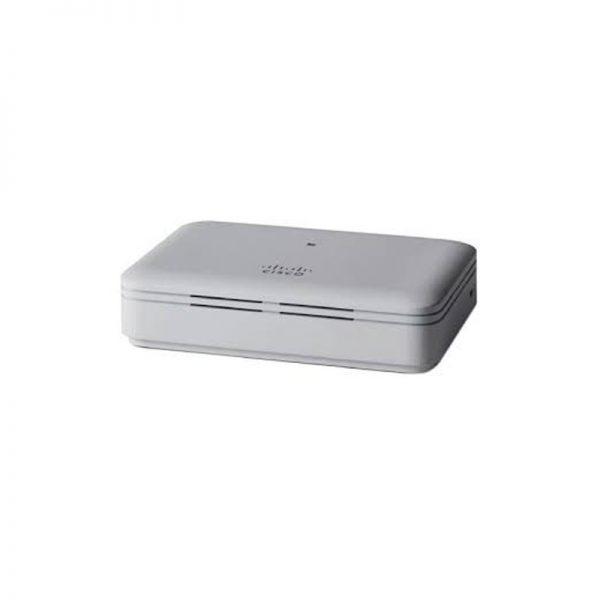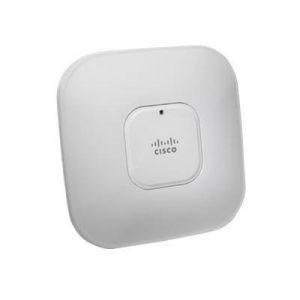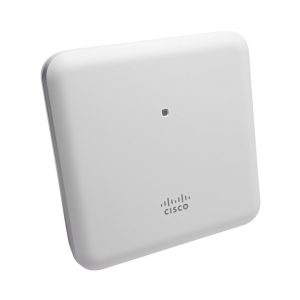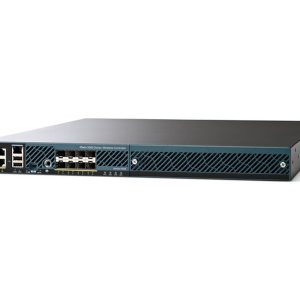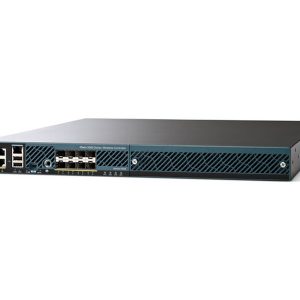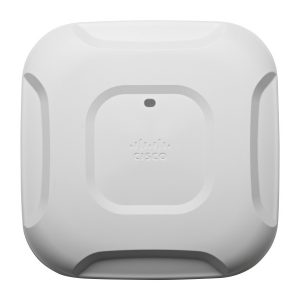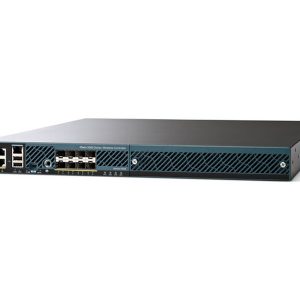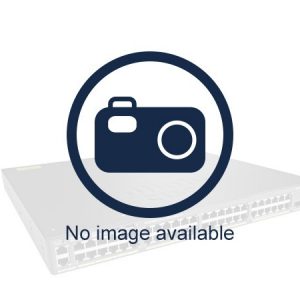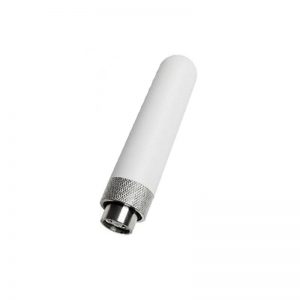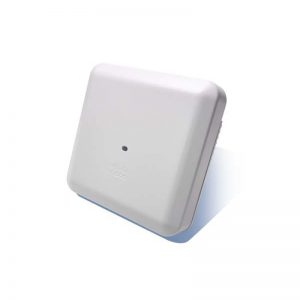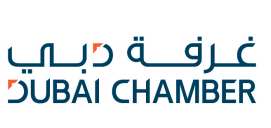Product Details
AIR-AP1815T-K-K9 Datasheet
AED631.00
| Model: | Cisco Aironet 1815T 802.11ac Wave 2 Access Point |
| Detail: | Cisco Aironet AP1815T Series, Reg Domain K |
pdf attachment : AIR-AP1815T-N-K9 Datasheet
Description
AIR-AP1815T-K-K9 Datasheet
Gear Net Technologies group is an extraordinary blend of profoundly qualified and ensured experts from Microsoft, CISCO and numerous more.Once introduced committed LED pointers portray the boot loader status, affiliation status, working status, boot loader admonitions, and boot load mistakes to keep network administrators mindful of the operational condition of the AP.
The Aironet 1810W Wireless Access Point from Cisco gives numerous information pathways permitting two gadgets to speak with the AP simultaneously with information move paces of up to 867 Mbps. Notwithstanding MU-MIMO innovation, this Cisco passageway works on both the 2.4 GHz and 5 GHz frequencies and supports 802.
11b/g/n organizing principles. In the event that a wired association is required, the SFP-10G-USR Aironet AIR-AP1810W-B-K9 likewise comes outfitted with three Gigabit Ethernet ports, a solitary Gigabit Ethernet uplink port, and one detached pass-through RJ-45 port.
Cisco Aironet 1815t Access Point Specification |
||||||||
| Authentication and security | ● Advanced Encryption Standard (AES) for Wi-Fi Protected Access 2 (WPA2)
● 802.1X, RADIUS authentication, authorization, and accounting (AAA) ● 802.11r ● 802.11i |
|||||||
| Software | ● Cisco Unified Wireless Network Software with AireOS Wireless Controllers Release 8.5 or later | |||||||
| Supported WLAN Controllers | ● Cisco 2500 Series Wireless Controllers, Cisco 3500 Series Wireless Controllers, Cisco Wireless Controller Module for ISR G2, Cisco Wireless Services Module 2 (WiSM2) for Catalyst® 6500 Series Switches, Cisco 5500 Series Wireless Controllers, Cisco Flex® 7500 Series Wireless Controllers, Cisco 8500 Series Wireless Controllers, Cisco 9800 series Wireless Controllers, | |||||||
| Maximum clients | ● Maximum number of associated wireless clients: 200 per Wi-Fi radio, in total 400 clients per access point | |||||||
| 802.11ac | ● 2×2 single-user/multiuser MIMO with two spatial streams
● Maximal ratio combining (MRC) ● 20-, 40-, and 80-MHz channels ● PHY data rates up to 866.7 Mbps (80 MHz on 5 GHz) ● Packet aggregation: A-MPDU (Tx/Rx), A-MSDU (Rx) ● 802.11 Dynamic Frequency Selection (DFS) ● Cyclic shift diversity (CSD) support |
|||||||
| Ethernet ports | ● Authentication with 802.1X or MAC filtered
● Dynamic VLAN or per port ● Traffic locally switched or tunneled back to wireless LAN controller |
|||||||
| Data rates supported | 802.11a: 6, 9, 12, 18, 24, 36, 48, 54 Mbps | |||||||
| 802.11b/g: 1, 2, 5.5, 6, 9, 11, 12, 18, 24, 36, 48, 54 Mbps | ||||||||
| 802.11n data rates on 2.4 GHz: | ||||||||
| MCS Index1 | GI2 = 800 ns | GI = 400 ns | ||||||
| 20-MHz Rate (Mbps) | 20-MHz Rate (Mbps) | |||||||
| 0 | 6.5 | 7.2 | ||||||
| 1 | 13 | 14.4 | ||||||
| 2 | 19.5 | 21.7 | ||||||
| 3 | 26 | 28.9 | ||||||
| 4 | 39 | 43.3 | ||||||
| 5 | 52 | 57.8 | ||||||
| 6 | 58.5 | 65 | ||||||
| 7 | 65 | 72.2 | ||||||
| 8 | 13 | 14.4 | ||||||
| 9 | 26 | 28.9 | ||||||
| 10 | 39 | 43.3 | ||||||
| 11 | 52 | 57.8 | ||||||
| 12 | 78 | 86.7 | ||||||
| 13 | 104 | 115.6 | ||||||
| 14 | 117 | 130 | ||||||
| 15 | 130 | 144.4 | ||||||
| 802.11ac data rates on 5 GHz: | ||||||||
| MCS Index | Spatial Streams | GI = 800 ns | GI = 400 ns | |||||
| 20-MHz Rate (Mbps) | 40-MHz Rate (Mbps) | 80-MHz Rate (Mbps) | 20-MHz Rate (Mbps) | 40-MHz Rate (Mbps) | 80-MHz Rate (Mbps) | |||
| 0 | 1 | 6.5 | 13.5 | 29.3 | 7.2 | 15 | 32.5 | |
| 1 | 1 | 13 | 27 | 58.5 | 14.4 | 30 | 65 | |
| 2 | 1 | 19.5 | 40.5 | 87.8 | 21.7 | 45 | 97.5 | |
| 3 | 1 | 26 | 54 | 117 | 28.9 | 60 | 130 | |
| 4 | 1 | 39 | 81 | 175.5 | 43.3 | 90 | 195 | |
| 5 | 1 | 52 | 108 | 234 | 57.8 | 120 | 260 | |
| 6 | 1 | 58.5 | 121.5 | 263.3 | 65 | 135 | 292.5 | |
| 7 | 1 | 65 | 135 | 292.5 | 72.2 | 150 | 325 | |
| 8 | 1 | 78 | 162 | 351 | 86.7 | 180 | 390 | |
| 9 | 1 | – | 180 | 390 | – | 200 | 433.3 | |
| 0 | 2 | 13 | 27 | 58.5 | 14.4 | 30 | 65 | |
| 1 | 2 | 26 | 54 | 117 | 28.9 | 60 | 130 | |
| 2 | 2 | 39 | 81 | 175.5 | 43.3 | 90 | 195 | |
| 3 | 2 | 52 | 108 | 234 | 57.8 | 120 | 260 | |
| 4 | 2 | 78 | 162 | 351 | 86.7 | 180 | 390 | |
| 5 | 2 | 104 | 216 | 468 | 115.6 | 240 | 520 | |
| 6 | 2 | 117 | 243 | 526.5 | 130 | 270 | 585 | |
| 7 | 2 | 130 | 270 | 585 | 144.4 | 300 | 650 | |
| 8 | 2 | 156 | 324 | 702 | 173.3 | 360 | 780 | |
| 9 | 2 | – | 360 | 780 | – | 400 | 866.7 | |
| Maximum number of non-overlapping channels | A (A regulatory domain):
● 2.412 to 2.462 GHz; 11 channels ● 5.180 to 5.320 GHz; 8 channels ● 5.500 to 5.700 GHz; 8 channels (excludes 5.600 to 5.640 GHz) ● 5.745 to 5.825 GHz; 5 channels B (B regulatory domain): ● 2.412 to 2.462 GHz; 11 channels ● 5.180 to 5.320 GHz; 8 channels ● 5.500 to 5.720 GHz; 12 channels ● 5.745 to 5.825 GHz; 5 channels C (C regulatory domain): ● 2.412 to 2.472 GHz; 13 channels ● 5.745 to 5.825 GHz; 5 channels D (D regulatory domain): ● 2.412 to 2.462 GHz; 11 channels ● 5.180 to 5.320 GHz; 8 channels ● 5.745 to 5.825 GHz; 5 channels E (E regulatory domain): ● 2.412 to 2.472 GHz; 13 channels ● 5.180 to 5.320 GHz; 8 channels ● 5.500 to 5.700 GHz; 8 channels (excludes 5.600 to 5.640 GHz) F (F regulatory domain): ● 2.412 to 2.472 GHz; 13 channels ● 5.745 to 5.805 GHz; 4 channels G (G regulatory domain): ● 2.412 to 2.472 GHz; 13 channels ● 5.745 to 5.865 GHz; 7 channels H (H regulatory domain): ● 2.412 to 2.472 GHz; 13 channels ● 5.180 to 5.320 GHz; 8 channels ● 5.745 to 5.825 GHz; 5 channels I (I regulatory domain): ● 2.412 to 2.472 GHz; 13 channels ● 5.180 to 5.320 GHz; 8 channels |
K (K regulatory domain):
● 2.412 to 2.472 GHz; 13 channels ● 5.180 to 5.320 GHz; 8 channels ● 5.500 to 5.620 GHz; 7 channels ● 5.745 to 5.805 GHz; 4 channels N (N regulatory domain): ● 2.412 to 2.462 GHz; 11 channels ● 5.180 to 5.320 GHz; 8 channels ● 5.745 to 5.825 GHz; 5 channels Q (Q regulatory domain): ● 2.412 to 2.472 GHz; 13 channels ● 5.180 to 5.320 GHz; 8 channels ● 5.500 to 5.700 GHz; 11 channels R (R regulatory domain): ● 2.412 to 2.472 GHz; 13 channels ● 5.180 to 5.320 GHz; 8 channels ● 5.660 to 5.700 GHz; 3 channels ● 5.745 to 5.805 GHz; 4 channels S (S regulatory domain): ● 2.412 to 2.472 GHz; 13 channels ● 5.180 to 5.320 GHz; 8 channels ● 5.500 to 5.700 GHz; 11 channels ● 5.745 to 5.825 GHz; 5 channels T (T regulatory domain): ● 2.412 to 2.462 GHz; 11 channels ● 5.280 to 5.320 GHz; 3 channels ● 5.500 to 5.700 GHz; 8 channels (excludes 5.600 to 5.640 GHz) ● 5.745 to 5.825 GHz; 5 channels Z (Z regulatory domain): ● 2.412 to 2.462 GHz; 11 channels ● 5.180 to 5.320 GHz; 8 channels ● 5.500 to 5.700 GHz; 8 channels (excludes 5.600 to 5.640 GHz) ● 5.745 to 5.825 GHz; 5 channels |
||||||
| Note: This varies by regulatory domain. Refer to the product documentation for specific details for each regulatory domain. | ||||||||
| Available transmit power settings | 2.4 GHz
20 dBm (100 mW) 17 dBm (50 mW) 14 dBm (25 mW) 11 dBm (12.5 mW) 8 dBm (6.25 mW) 5 dBm (3.13 mW) 2 dBm (1.56 mW) -1 dBm (0.78 mW) |
5 GHz
20 dBm (100 mW) 17 dBm (50 mW) 14 dBm (25 mW) 11 dBm (12.5 mW) 8 dBm (6.25 mW) 5 dBm (3.13 mW) 2 dBm (1.56 mW) -1 dBm (0.78 mW) |
||||||
| Note: The maximum power setting will vary by channel and according to individual country regulations. Refer to the product documentation for specific details. | ||||||||
| Integrated antennas | ● 2.4 GHz, gain 2 dBi
● 5 GHz, gain 3 dBi |
|||||||
| Interfaces | ● 1 x 10/100/1000BASE-T autosensing (RJ-45)
● Three 10/100/1000BASE-T ports (local Ethernet ports), including one PoE out port: ◦ PoE out provides 802.3af when access point is powered by Cisco local power supply (AIR-PWR-D=) |
|||||||
| Indicators | ● Status LED indicates boot loader status, association status, operating status, boot loader warnings, boot loader errors | |||||||
| Dimensions (W x L x H) |
● Access point (without mounting bracket): 6 x 4 x 1.5 in (152.4 x 101.6 x 37.7mm) | |||||||
| Weight | ● Access point without mounting bracket or any other accessories: 13 oz (365 g) | |||||||
| Environmental | ● Operating
◦ Temperature: 32° to 104°F (0° to 40°C) ◦ Humidity: 10% to 90% (non-condensing) ◦ Max. altitude: 9843 ft (3,000 m) @ 40°C ● Non-operating (storage and transportation) ◦ Temperature: -22° to 158°F (-30° to 70°C) ◦ Humidity: 10% to 90% (non-condensing) ◦ Max. altitude: 15,000 ft (4,500 m) @ 25°C |
|||||||
| System | ● 512 MB DRAM
● 128 MB flash ● 710 MHz quad-core |
|||||||
| Input power requirements | ● 44 to 52V DC | |||||||
| Power draw | ● 8.5W (no PoE out and no USB) | |||||||
| PoE output | ● 802.3af: 15.4W at port | |||||||
| Physical security | ● Kensington lock slot | |||||||
| Accessories | ● Physical security kit: AIR-SEC-50= (sold separately), with 50 pcs. security screws used to secure the access point onto wall-mounting bracket, 50 pcs. RJ-45 caps and 2 pcs. unlock keys used to block physical access to Ethernet ports | |||||||
| Warranty | Limited Lifetime Hardware Warranty | |||||||
| Compliance | ● Safety:
◦ UL 60950-1 ◦ CAN/CSA-C22.2 No. 60950-1 ◦ UL 2043 ◦ IEC 60950-1 ◦ EN 60950-1 ● Radio approvals: ◦ FCC Part 15.247, 15.407 ◦ RSS-247 (Canada) ◦ EN 300.328, EN 301.893 (Europe) ◦ ARIB-STD 66 (Japan) ◦ ARIB-STD T71 (Japan) ◦ EMI and susceptibility (Class B) ◦ FCC Part 15.107 and 15.109 ◦ ICES-003 (Canada) ◦ VCCI (Japan) ◦ EN 301.489-1 and -17 (Europe) ◦ EN 50385 ● IEEE standards: ◦ IEEE 802.11a/b/g, 802.11n, 802.11h, 802.11d ◦ IEEE 802.11ac ● Security: ◦ 802.11i, WPA2, WPA ◦ 802.1X ◦ AES ● Extensible Authentication Protocol (EAP) types: ◦ EAP-Transport Layer Security (TLS) ◦ EAP-Tunneled TLS (TTLS) or Microsoft Challenge Handshake Authentication Protocol Version 2 (MSCHAPv2) ◦ Protected EAP (PEAP) v0 or EAP-MSCHAPv2 ◦ EAP-Flexible Authentication via Secure Tunneling (FAST) ◦ PEAP v1 or EAP-Generic Token Card (GTC) ◦ EAP-Subscriber Identity Module (SIM) ● Multimedia: ◦ Wi-Fi Multimedia (WMM) ● Other: ◦ FCC Bulletin OET-65C ◦ RSS-102 |
|||||||





